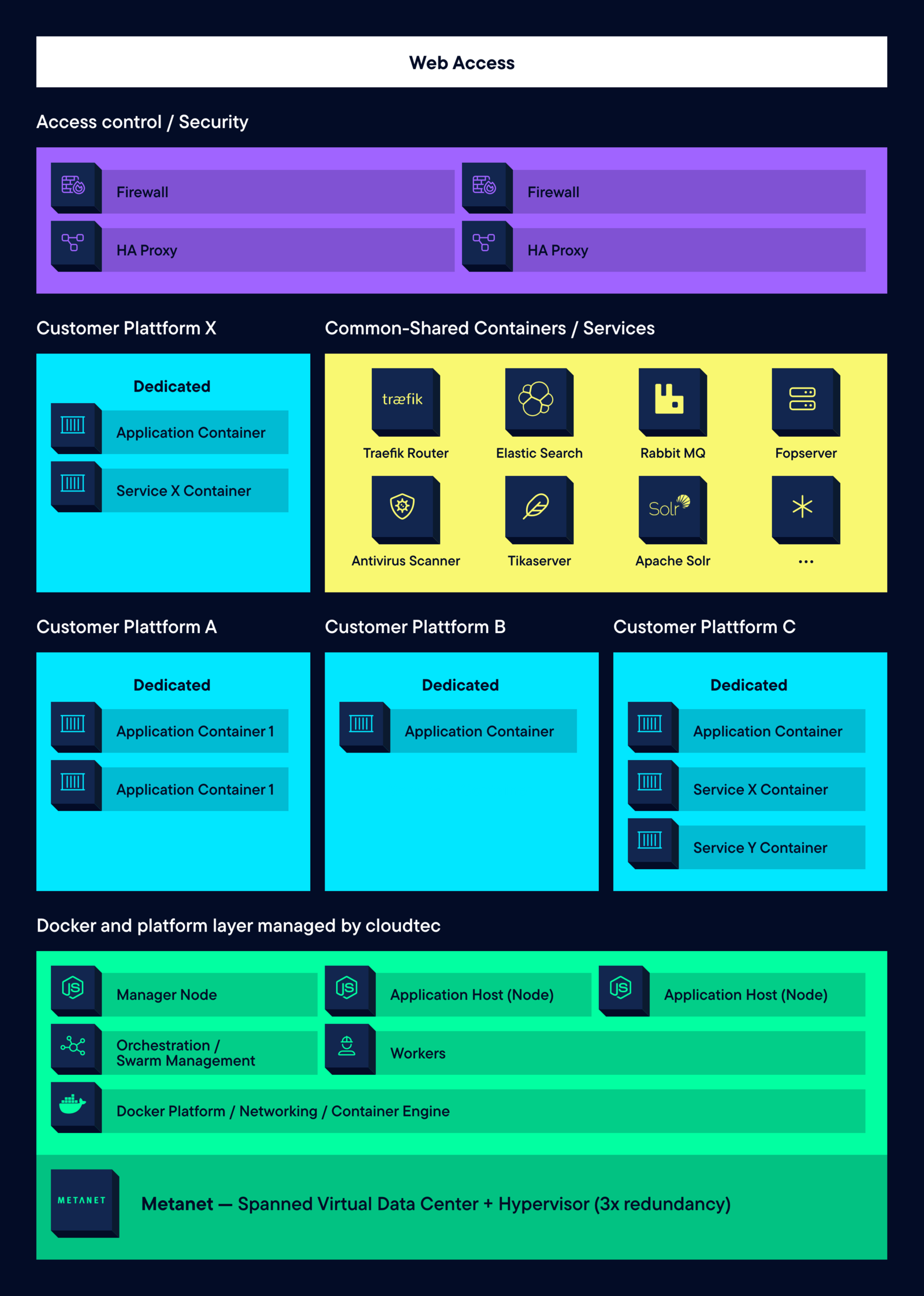The first level of cloud service types consists of infrastructure.
The main purpose of Infrastructure as a Service (IaaS) is to offer hardware resources such as servers, storage and networks, as well as the associated software to manage and operate the hardware and the operating systems with virtualizing capabilities as a service. It is a more advanced service than renting just one physical server because it brings with it the ability to build a complete infrastructure in the cloud, consisting of interconnected servers and storage points. The user can get new servers on-demand and decide which operating systems to use. By turning servers on and off as needed, the user pays only for compute resources used.
Contracts are often based on pay-per-use models. The IaaS provider manages very little compared to other cloud service providers. The main responsibility for the provider is on the hardware, network and storage. The user is responsible for configuring and running the servers. Most of the time, the service provider offers a web interface that allows the user to get new servers, define a template for the operating system, assign IP addresses and set the hardware specifications for the server such as processors, RAM and storage. The power of IaaS is the ability to scale the system on-demand by provisioning server resources automatically and quickly.
Architecture
The most common form of IaaS architecture is the virtualized approach, which allows the virtual machines to be released and started automatically. The user manually specifies which resources he needs. If the required resources increase, new instances are automatically provided. If, on the other hand, the required resources decrease, the instances are automatically closed again. IaaS is often considered the first level of cloud computing and provides compute resources like a utility.

Service provider requirements
The most basic components of the cloud are the simple hardware resources such as CPU, memory, storage and network components that determine the computational power in the cloud. The providers, which are often larger corporations, operate huge data centers. The provisioning of new server hardware is automated and optimized. For example, if the vendor uses HP Blade technology for the server farm, adding a new server to the infrastructure is an extremely simple and almost completely automated task. After the server is plugged into an empty slot, its status is automatically displayed on the control panel and the installation of the operating system is also automatically initiated. However, it is not the operating system defined by the end user that is installed on the basic building blocks, but the virtualization system, such as Vmware ESX Server, Microsoft Hyper-V or XEN.
After successful installation of the server operating system, the machine can be added to the pool of physical servers that provides compute power and software for instances. It is necessary for the provider to have operations available that allow it to scale the infrastructure quickly to offer increased resources to IaaS end users. The goal is to make everything flexible and on-demand. The provider must estimate and expect how many hardware resources its customers will need. Therefore, intelligent algorithms are needed to predict the compute power needed. The IaaS provider must also have fast and scalable storage systems. There are storage hardware vendors such as EMC and Hitachi that offer storage virtualization, which again is designed for environments, providing flexibility and the ability to provision new storage quickly and without system disruption. In addition to server hardware and storage systems, another important component is the network infrastructure. Data between storage devices and network devices (switches) is transmitted through fiber optic cables. The network switches and the physical servers are usually connected with Ethernet cables that provide a transmission speed of 1 or 10 Gbit per second. Network devices should be of high quality and designed for virtual segmentation.
For an IaaS provider, the initial hardware investment is extremely expensive, as very high-end equipment is obviously not cheap. Another cost factor is the personnel needed to set up an automated process, which in turn is needed to provision hardware quickly and reliably. Management software must be installed to manage and monitor the physical hardware resources, as well as to deal with load balancing and troubleshooting hardware failures. Depending on the type of service the IaaS offers, an advanced web interface may be needed to allow the end user to configure and build their infrastructure in the cloud. There are many more things a provider needs to take care of. Providers that have access to huge infrastructures and huge budgets are hard to beat because they lower the cost per server and therefore offer their services cheaper
